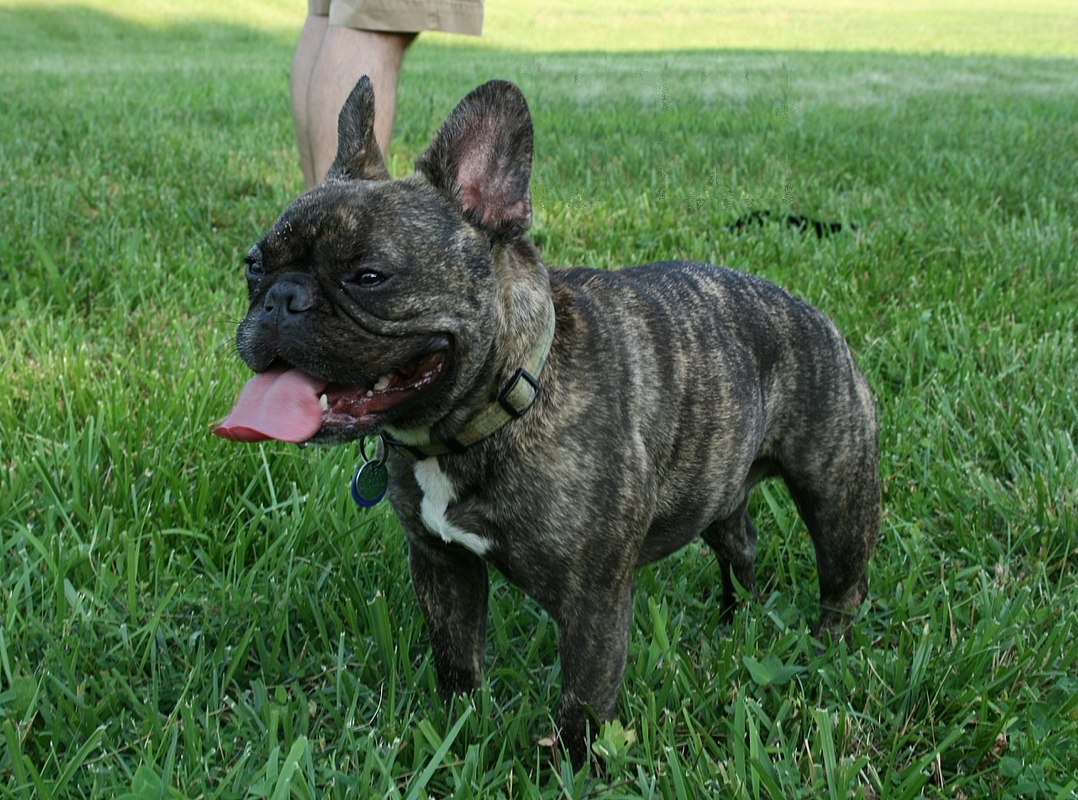French Bulldogs—with their bat-like ears, smushy faces, and playful personalities—are beloved worldwide for their affectionate nature and adaptability to city living. But beneath their charming exterior lies a breed with distinct challenges, many rooted in their physical structure and breeding history. While they make wonderful companions, potential owners should be aware of the downsides to ensure they can provide the care these dogs need. Surprisingly, a non motorized treadmill for dogs emerges as a valuable tool in addressing several of these challenges, offering benefits uniquely suited to the French Bulldog’s needs.

Key Takeaways
-
French Bulldogs often have health issues. They can have trouble breathing and joint pain because of their body shape.
-
They need careful exercise and temperature control to stay safe and healthy. This is especially important in hot or cold weather.
-
Training and mental activities help reduce separation anxiety. This keeps French Bulldogs happy and well-behaved.
-
Using tools like non-motorized treadmills and positive training methods can make your French Bulldog’s life better.
The Downside of French Bulldogs: A Breed Shaped by Form
French Bulldogs, or “Frenchies,” were bred primarily for companionship, but their distinctive appearance—short snouts, compact bodies, and stocky limbs—comes with trade-offs. Unlike breeds developed for work or endurance, Frenchies are a brachycephalic (short-headed) breed, and this physical trait underpins many of their most significant challenges.
1. Brachycephalic Airway Syndrome: Breathing Struggles
French Bulldogs have short noses and flat faces. This special shape causes a problem called Brachycephalic Obstructive Airway Syndrome (BOAS). Studies show that about 22% of French Bulldogs have serious breathing issues because of this. Common signs include:
-
Hard time breathing, especially when stressed or active
-
Loud sounds like snorting and snoring
-
Coughing and gagging often
-
Trouble exercising
-
Cyanosis, which is a blue color showing low oxygen
These breathing problems can get worse over time. This may lead to serious issues like laryngeal collapse. If you see any of these signs, it’s important to talk to your vet for early help.
2. Joint and Mobility Issues
French Bulldogs’ compact, muscular bodies place extra strain on their joints. Their short legs and heavy frames make them prone to hip dysplasia, patellar luxation (dislocating kneecaps), and intervertebral disc disease (IVDD), a painful condition affecting the spine. These issues often worsen with age, but even young Frenchies may struggle with stairs, jumping onto furniture, or sustained movement on hard surfaces.
Their mobility challenges are compounded by their tendency to gain weight. Frenchies love food, and their low energy needs (compared to more active breeds) make them prone to obesity. Extra weight exacerbates joint pain, creating a cycle: discomfort leads to inactivity, which leads to weight gain, which leads to more discomfort.
3. Heat and Cold Sensitivity

Beyond their breathing issues, Frenchies are highly sensitive to temperature extremes. Their short coats offer little protection against cold, making them prone to shivering and discomfort in chilly weather. Conversely, their inability to regulate body temperature through panting makes them 极易 overheat in warm or humid conditions. This limits their outdoor time significantly—early mornings and late evenings are often the only safe windows for activity, leaving them with unspent energy during the day.
4. Separation Anxiety and Boredom
French Bulldogs are very loving, but this can cause separation anxiety. They need company and may get upset when left alone for too long. Signs of separation anxiety include barking too much, breaking things, and trying to escape.
To help with this, make a safe and calm space for your French Bulldog. Use positive training to boost their confidence and give them fun toys to keep their minds busy. Sticking to a daily routine can also help ease their anxiety. If you see strong anxiety signs, talk to your vet for special behavior plans.
Why Non-Motorized Treadmills Are a Game-Changer for Frenchies

At first glance, a treadmill might seem counterintuitive for a breed with breathing and mobility issues. But non motorized treadmills—unlike their electric counterparts—offer unique advantages that align perfectly with the French Bulldog’s needs. Designed to let the dog control the pace, these treadmills provide a safe, controlled environment for exercise, addressing many of the downsides of French Bulldogs without exacerbating their vulnerabilities.
1. Low-Impact Exercise: Protecting Joints and Limiting Strain
One of the biggest advantages of a non motorized treadmill for dogs is its low-impact nature. The belt moves only when the dog walks or trots, eliminating the jarring impact of running on hard pavement or grass. For Frenchies with joint pain or IVDD, this means they can engage in physical activity without worsening discomfort.
The slow, steady motion of a non motorized treadmill strengthens muscles around the joints (like the hips and knees) without straining them, helping to support weak areas over time. This is crucial for Frenchies prone to obesity: even gentle exercise on a treadmill burns calories, aiding weight management and reducing pressure on sensitive joints. Unlike outdoor walks, which may involve uneven surfaces or sudden stops, the treadmill’s consistent surface minimizes the risk of slips or twists that could injure a Frenchie’s fragile limbs.
2. Controllable Slope: Adapting to Breathing Limitations
With a non-motorized treadmill, you can easily change the incline. This helps you adjust the workout to your French Bulldog's breathing needs. For dogs with Brachycephalic Airway Syndrome, this is very important. You can start on a flat surface and slowly raise the slope as your dog gets stronger. This controlled setting helps manage their breathing while still giving them a good workout.
3. Temperature Safety: Exercise Without Weather Risks
Non motorized treadmills shine as a solution to Frenchies’ temperature sensitivity. Whether it’s 90°F (32°C) with high humidity or 40°F (4°C) with wind chill, the treadmill allows for safe exercise indoors. Owners can maintain a comfortable room temperature, ensuring their Frenchie doesn’t overheat or get too cold—two major risks that limit outdoor activity for the breed.
This is especially valuable for Frenchies with separation anxiety. Instead of leaving them alone to fret, owners can set up a short treadmill session before leaving, helping them burn off energy in a controlled environment. A tired Frenchie is less likely to exhibit destructive behaviors, and the routine of a morning treadmill session can provide comfort amid the stress of their owner’s departure.
4. Mental Stimulation: Combating Boredom Indoors
Frenchies are intelligent dogs, and boredom often fuels their anxiety and destructive habits. A non motorized treadmill isn’t just about physical exercise—it’s a form of mental engagement. The focus required to walk on the treadmill (even at a slow pace) keeps their minds occupied, reducing the urge to chew furniture or bark excessively.
Owners can enhance this mental stimulation by turning treadmill sessions into mini-training opportunities. For example, teaching a Frenchie to “go” (start walking) or “stop” (pause) on command reinforces obedience while making the activity feel like a game. Over time, many Frenchies come to associate the treadmill with positive attention, trotting over willingly when they see it set up—turning a potential chore into a bonding experience.
Beyond the Treadmill: A Holistic Approach to Frenchie Care
Taking care of your French Bulldog is more than just exercise. You also need to think about their training. French Bulldogs can be stubborn, which makes training hard. They may have separation anxiety and territorial behavior. These problems can cause barking and damage when they are alone.
To solve these issues, use positive reinforcement. This method encourages good behavior without scaring them. Here are some helpful strategies:
-
Short Training Sessions: Keep sessions short and fun. Use treats, praise, and play to motivate your dog.
-
Early Socialization: Let your Frenchie meet different places and people. This helps stop territorial aggression and too much barking.
-
Mental Stimulation: Use puzzle toys and fun games to keep your dog’s mind busy. This helps reduce boredom and encourages teamwork.
-
Crate Training: This method helps with housebreaking and stops bad behavior when you are gone.
-
Gradual Conditioning: Help your dog get used to being alone by slowly increasing the time you leave.
You should also watch your French Bulldog's health. Regular vet visits are important for checking their well-being. Think about using special supplements made for French Bulldogs. These can help their long-term health and are easy to give at home.
Also, pay attention to dental care. Gentle brushing and dental chews can stop common dental problems. Managing skin issues is important too. Use medicated shampoos and creams to treat allergies and skin problems.
By mixing good training methods with health care practices, you can help your French Bulldog live a happy and healthy life.
Conclusion: Embracing the Frenchie’s Challenges with the Right Tools

The downside of French Bulldogs—from breathing struggles to joint pain—are significant, but they don’t overshadow the joy these dogs bring. With awareness and proactive care, these challenges are manageable, and a non motorized treadmill for dogs emerges as an unexpected ally. Its low-impact design, dog-controlled pace, and indoor convenience address the breed’s most pressing needs, allowing Frenchies to move, play, and thrive despite their physical limitations.
For potential Frenchie owners, understanding these downsides is essential—but so is knowing that solutions exist. A non motorized treadmill isn’t just a piece of equipment; it’s a way to honor a Frenchie’s need to move while protecting their health. It lets them be the playful, curious dogs they are, without the risks that come with outdoor exercise.
In the end, Frenchies ask for little: love, warmth, and a chance to be near their people. With tools like non motorized treadmills, we can give them that—and so much more: a life of comfort, activity, and endless tail wags.
Ready to support your Frenchie’s health? Explore the benefits of a non motorized treadmill for dogs, designed to keep your brachycephalic companion safe, active, and happy.

FAQ
Do French Bulldogs shed a lot?
French Bulldogs have short fur and shed a bit. Brushing them often helps control shedding and keeps their coat nice. You might find some hair on your furniture, but it’s easy to clean up.
How much exercise do French Bulldogs need?
French Bulldogs need about 30 minutes of exercise each day. Short walks and playtime are best. Avoid hard activities, especially when it’s hot, to keep their breathing safe.
What are common health issues in French Bulldogs?
Common health problems include Brachycephalic Airway Syndrome, hip dysplasia, and skin allergies. Regular vet check-ups and a healthy diet can help manage these issues well.










0 Comments